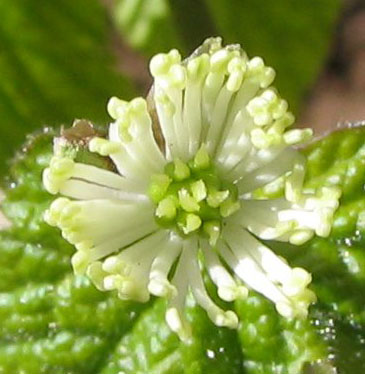I’m allergic to dust so to others out there who are suffering during the enduring North American drought, you have my sympathy. I’m also allergic to mold and pollen. When we encounter one of these common allergens our immune system will over respond. This can cause one or more of the following symptoms:
scratchy or swollen throat
dry or watering eyes
rash/hives
coughing/wheezing/shortness of breath
runny nose
sneezing
headache
nausea
diarrhea
These symptoms depend on whether you inhaled, touched, or ingested the allergen.
The solution that has worked best for me is a nasal rinse. You can by these in at least two form: neti pot or bottle. Sometimes they will come with a prepackaged solution or you can make your own. It is important to follow the sinus rinse instructions. Keep your equipment sterilized. Boil the water or use distilled water to prevent infection. Use the water at room temperature to prevent burns. Don’t use a sinus rinse when your passages are very blocked. This can cause pain in your ears from the pressure.
Tamera Glascock owner of Tamera’s Herbs in Edgar Springs, Missouri suggests making a sinus rinse out of 1 teaspoon of sea salt in 2 cups of water. Add 1/8 teaspoon of goldenseal to clear up any present infection. Goldenseal will also sooth and protect the sinus cavity membranes. (Kaleidoscope Weekly) She doesn’t mention what form of the goldenseal to use so I’m guessing a tincture.
UPDATE:
Hi~
Tamara (from Tamara’s Herbes) here. Nice article and a great blog!
I did want to clarify on the golden seal. I use the powdered form and put it in when I put in the salt. It doesn’t completely dissolve, but that isn’t really a bad thing. A small amount of the powder may not dissolve, but it will simply remain in your nasal cavity where it will continue to heal and soothe the mucus passages until your body naturally passes it out or absorbs it. I’ve never had a problem with it feeling gritty or anything like that.
I don’t recommend using the tincture because it almost always is in an alcohol base, which can cause drying, irritation or burning.

Image: Hydrastis canadensis (goldenseal) – flower is a cluster of white stigmata with light green tips surrounded by a darker shaded leaves. The leaves have many hills and dips. The edges are ragged and a red brown color.
Studies show that stinging Nettle (Urtica dioica) blocks histamine receptors and can sooth allergy symptoms. (Pubmed.gov) Glascock suggests making a tea of 1-2 nettle teaspoons of nettle leaves to use in the sinus rinse.
For irritated skin, my favorite treatment is aloe or tea tree oil.
For more information on herbs you can visit Linda Ursin’s site Heksebua.com. Linda is a heathen witch living in Norway.
Have any tips or websites you’d like to suggest? Please share them in the comments. Comments are moderated and it may take a day to show up in on the website.
References:
“Nature has the Cure” guest writer Tamera Glascock Kaleidoscope Weekly July 26, 2012
US National Library of Medicine – Allergies
“Nettle extract (Urtica dioica) affects key receptors and enzymes associated with allergic rhinitis.”
Roschek B Jr, Fink RC, McMichael M, Alberte RS. pubmed.gov
EHow video on use of a netie pot.
Use a neti pot daily to prevent sinus infections and promote easy breathing.
To complete this How-To you will need:
A neti pot
1 c. lukewarm water
¼ tsp. fine, non-iodized salt or 1/2 tsp. coarse, non-iodized kosher salt
A sink or a bowlWarning: If you suffer from chronic nose bleeds, nasal polyps, or a deviated septum, talk to a health care provider to make sure using a neti pot won’t make your condition worse.
Step 1: Purchase a neti pot
Purchase a neti pot. They are available online or at health food stores and are usually ceramic, plastic, or metal.
Step 2: Prepare a saline solution
Prepare a saline solution by filling the neti pot with one cup of lukewarm water, and then adding the salt to the pot.
Tip: Extremely hot or cold water and iodized salt can cause irritation and discomfort.
Step 3: Insert spout into nostril
Lean over the sink or a bowl, and turn your head to the left 90 degrees, so your right ear is parallel to the floor. Insert the neti pot’s spout into your left nostril, so that it forms a seal.
Step 4: Pour solution through nasal passage
Breathing through your open mouth only, pour the solution into your left nostril and let it flow out through the right nostril into the sink or bowl.
Step 5: Exhale through both nostrils
Once the neti pot is empty, exhale firmly through both nostrils to clear all water from your nasal passage.
Tip: If you blow into a tissue, don’t pinch your nostrils closed.
Step 6: Refill and repeat
Refill the neti pot and repeat the procedure with the other nostril.











